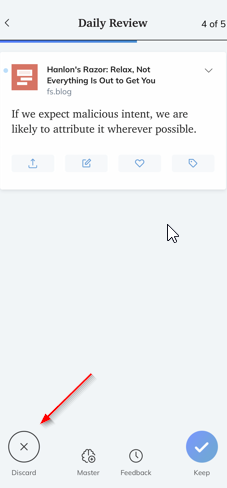
1/ Productivity & Emotions. I enjoyed this article by @ndwignall. He is one of my favorite clinical psychologist writers (worth subscribing to).
In my exploration of tools for thoughts, understanding how emotions work is an important part of my research.
nickwignall.com/emotion-manage…
In my exploration of tools for thoughts, understanding how emotions work is an important part of my research.
nickwignall.com/emotion-manage…
2/ Productivity isn’t solely dependent on having the right tool, rather Nick focuses on how negative self-talk can be disruptive to our focus & lead to procrastination.
Procrastination doesn’t have to be laziness, but can be a subtle avoidance to having to do difficult things.
Procrastination doesn’t have to be laziness, but can be a subtle avoidance to having to do difficult things.
3/ Its amazing how emotional state is directly connected with productivity. When full of self-doubt, or giving place to the internal critic, we can partially shutdown, lose flow and not get things done. Instead of letting our emotions fuel us forward, we allow them to disable us.
4/ Emotions are driven from our thoughts. Our emotions can be a strong motivator or demotivator in being productive and finding joy from our work.
So let’s break this down into a formula
thoughts -> emotions -> level of output
So let’s break this down into a formula
thoughts -> emotions -> level of output
5/ Now reverse this formula. If you find you are less productive, or you are putting of some important task, or struggling with he task at hand:
Ask yourself: What emotions am I experiencing?
Examples: Lack of self-confidence? Confusion or lack of clarity? Fear of failure?
Ask yourself: What emotions am I experiencing?
Examples: Lack of self-confidence? Confusion or lack of clarity? Fear of failure?
6/ We need to think about what emotions we are experiencing. Emotions don’t appear randomly, nor are they just byproducts of bodily processes.
Emotions are brought to life by our thoughts.
When we sense and identify an emotion, then we need to identify the thoughts behind them
Emotions are brought to life by our thoughts.
When we sense and identify an emotion, then we need to identify the thoughts behind them
7/ Once we understand what thoughts are derailing us emotionally, we can begin to address those thoughts.
In other words, we can’t change the emotion, rather the thought has to be changed.
This is not easily done.
In other words, we can’t change the emotion, rather the thought has to be changed.
This is not easily done.
8/ To change our emotions, we have to change our thoughts.
This means replacing a current thought with a helpful thought, or more likely to disprove to ourselves the so called “validity” of a harmful thought (example: feelings of worthlessness)
This means replacing a current thought with a helpful thought, or more likely to disprove to ourselves the so called “validity” of a harmful thought (example: feelings of worthlessness)
9/ In summary, our thoughts lead to emotions which affect our overall mental state which affect our ability to be productive.
What do you think, how have you found that your emotions affect your productivity?
What do you think, how have you found that your emotions affect your productivity?
• • •
Missing some Tweet in this thread? You can try to
force a refresh











